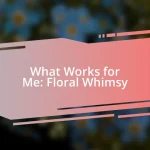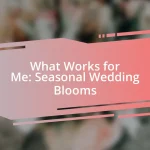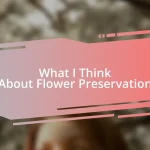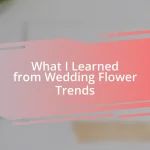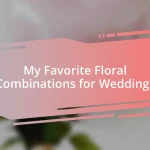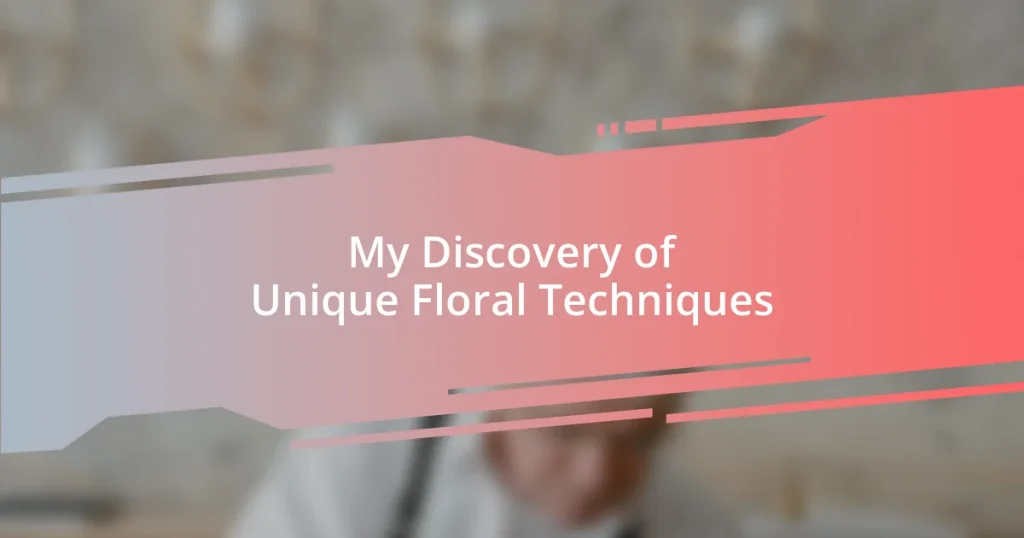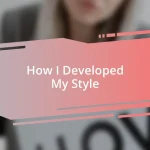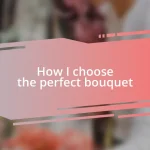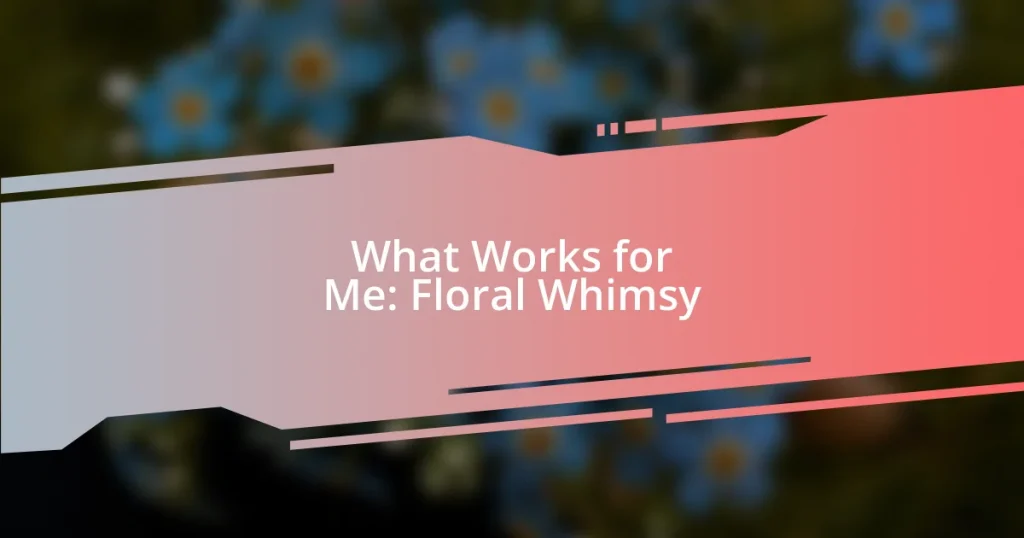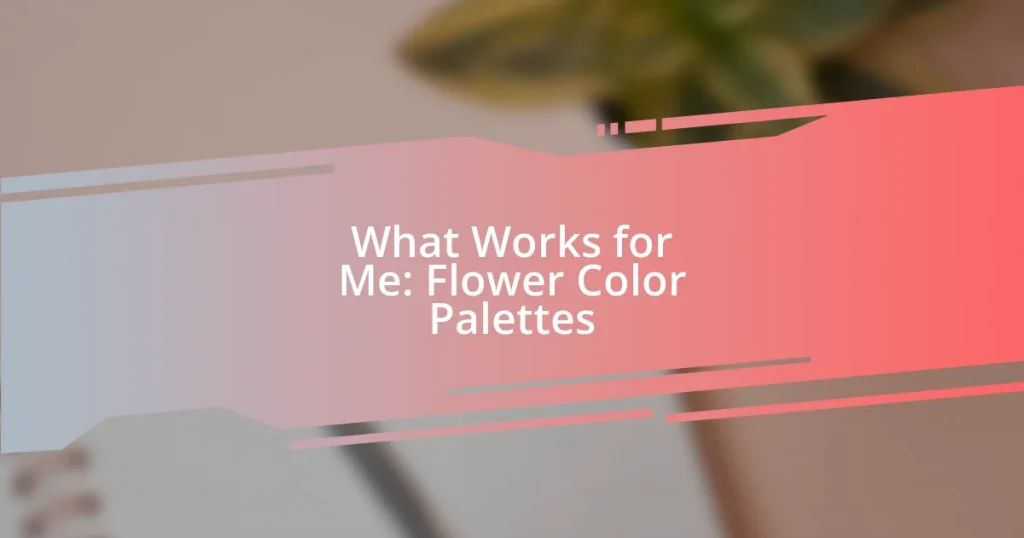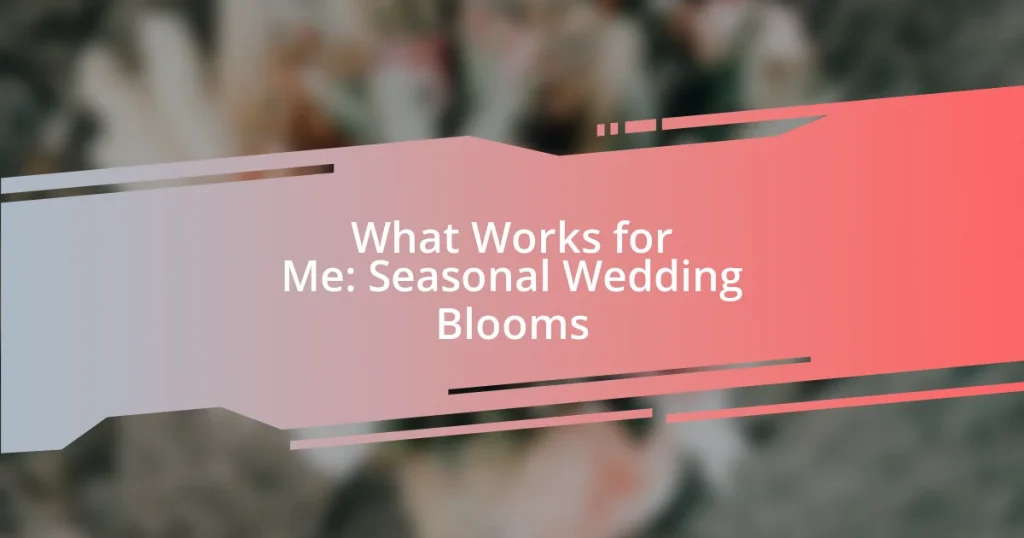Key takeaways:
- Exploration of unique floral techniques, including Ikebana, color theory, and texture, enhances floral arrangements and emotional expression.
- Different floral styles such as European garden, Ikebana, and modern floral design offer diverse ways to celebrate nature’s beauty and creativity.
- Innovative preservation methods and advanced techniques like foam-free design and wiring flowers allow for artistic flexibility and sustainability in floral composition.
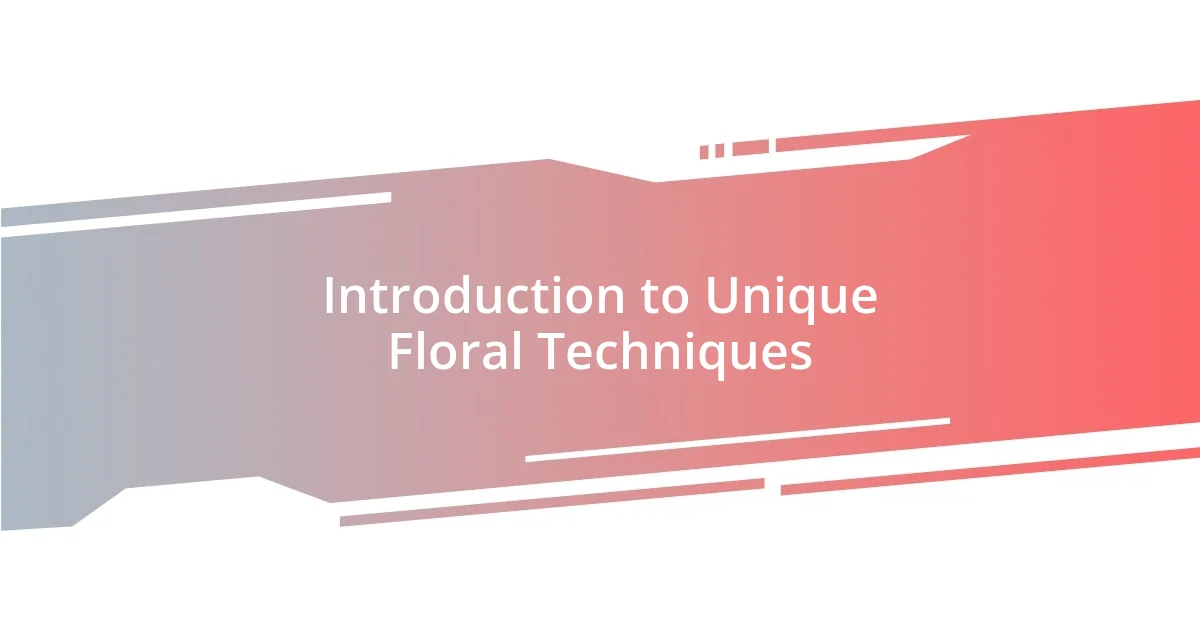
Introduction to Unique Floral Techniques
Floral design has always fascinated me, but it wasn’t until I stumbled upon unique techniques that my passion truly bloomed. I remember the first time I tried using the Japanese art of Ikebana; it shifted my perspective from simple arrangements to creating a meaningful expression of nature. Isn’t it amazing how something as ordinary as a flower can evoke such deep emotions and intricate thought?
As I explored further, I encountered the concept of color theory in floral arrangements, which transformed my approach to picking blooms. The idea that different colors can elicit specific feelings was a revelation. Have you ever noticed how a vibrant orange flower can energize a space, while soft pastels evoke calmness? This idea opened a new world of expressive possibilities for my arrangements.
In my journey, I’ve also experimented with texture and movement in floral compositions, learning that every element adds character and life. The thrill of combining smooth petals with rough foliage or introducing unexpected shapes creates a dialogue between the flowers. Don’t you find it exhilarating to think of flowers not just as decor, but as a way to tell a story?
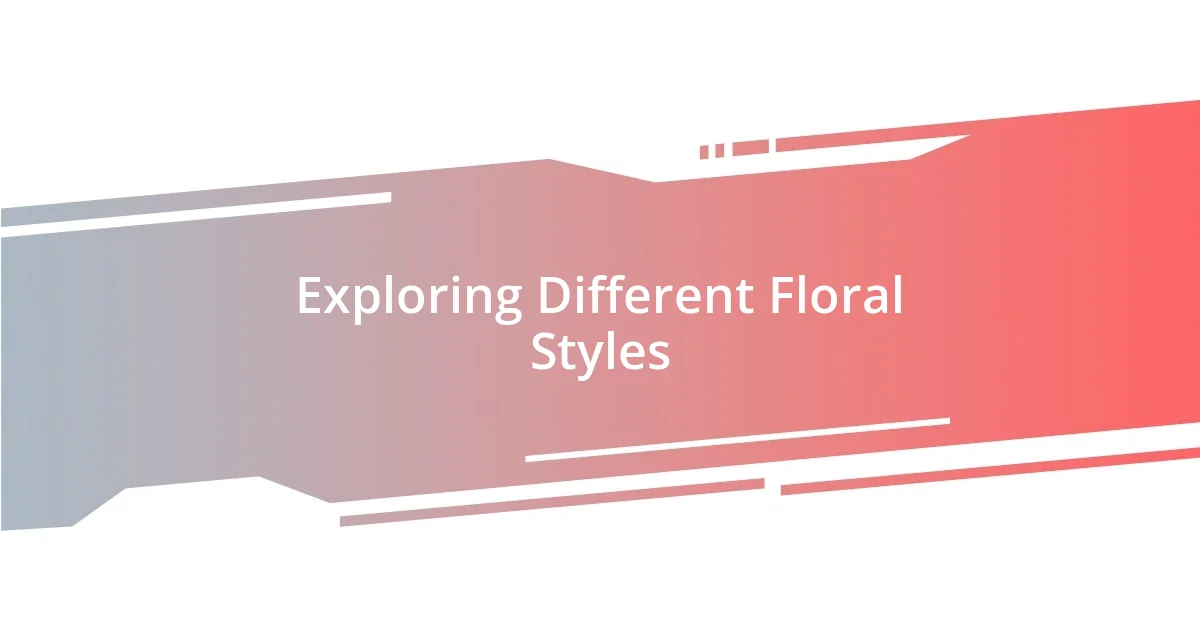
Exploring Different Floral Styles
When diving into floral styles, my interest has often been piqued by the breathtaking beauty of the European garden style. The lush, overflowing arrangements remind me of wandering through enchanting countryside gardens, filled with wild blooms and aromatic herbs. Each time I replicate this style, I aim for a look that celebrates abundance, making me feel connected to nature in a profoundly joyful way.
As I’ve explored Asian floral designs, particularly the structured beauty of Ikebana, I feel a deeper sense of balance and intentionality. The meticulous placement of each flower lends itself to a meditative process that captivates my spirit. I find it thought-provoking how such simplicity can convey so much emotion, drawing the observer’s eye to the beauty of negative space as much as the blooms themselves.
Then there’s the whimsical and often playful nature of modern floral styles, where breaking traditional rules can lead to surprising and expressive results. I recall my first attempt at a bold, asymmetrical arrangement; the vivid colors and unexpected shapes wrapped me in a wave of creative freedom. It was liberating to embrace spontaneity instead of adhering strictly to conventions, pushing the boundaries of what floral art can be.
| Floral Style | Key Features |
|---|---|
| European Garden Style | Lush, overflowing, wild blooms; celebrates abundance |
| Ikebana (Japanese) | Structured, balanced; emphasizes negative space and intention |
| Modern Floral Design | Playful, bold colors; breaks traditional rules for creative expression |
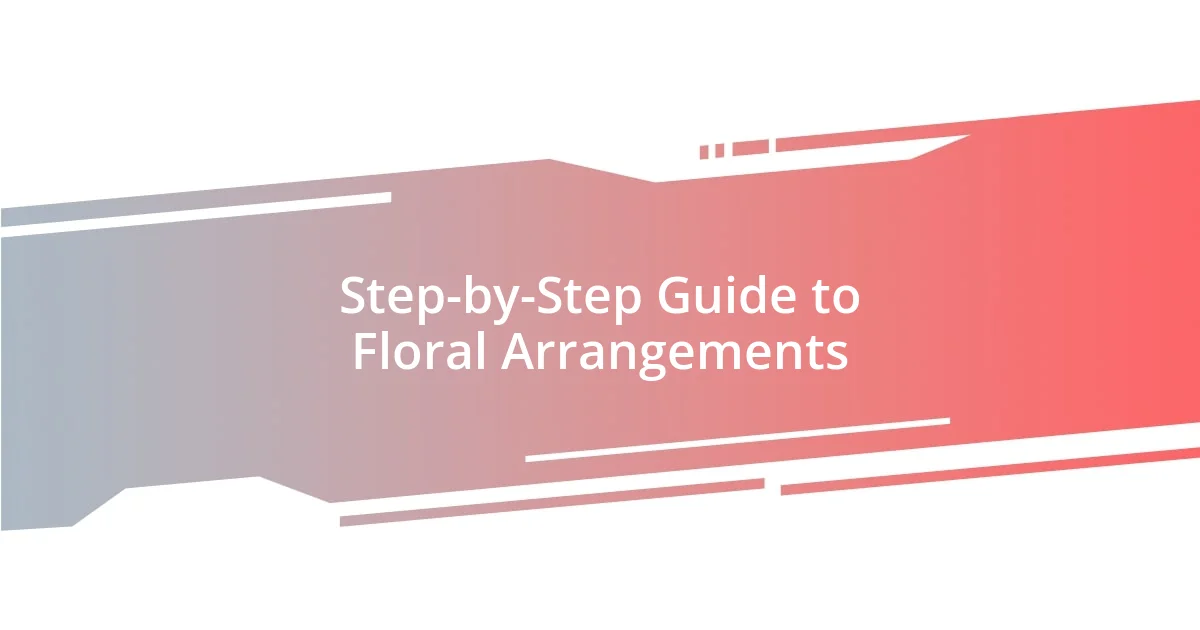
Step-by-Step Guide to Floral Arrangements
Creating floral arrangements can be a rewarding and therapeutic process. I often find myself spending quiet moments in my garden, gathering blooms and reflecting on each step. The way I approach a floral arrangement begins with selecting my focal flower, which captures the essence of the design. From there, I build around it, allowing my creativity to flow.
Here’s a simple step-by-step guide to arranging flowers:
- Choose Your Focal Flower: This is the star of your arrangement. Think about shape, size, and color.
- Select Supporting Blooms: Complement your focal flower with 2-3 additional types that enhance its beauty.
- Incorporate Foliage: Greenery adds depth and texture; consider varying types to create contrast.
- Create Balance: Distribute flowers and foliage evenly to maintain a harmonious look; I often take a step back to assess.
- Add Finishing Touches: Finally, consider accents like berries, twigs, or even dried flowers for added interest.
Whenever I arrange flowers, it feels like each stem tells a story. I distinctly remember a time when I created a bouquet for a friend’s birthday. I mixed sunflowers and lavender, evoking a sense of warmth and joy, and when she received it, her smile was priceless. In floral design, it’s not just about aesthetics; it’s about weaving emotions into every arrangement.
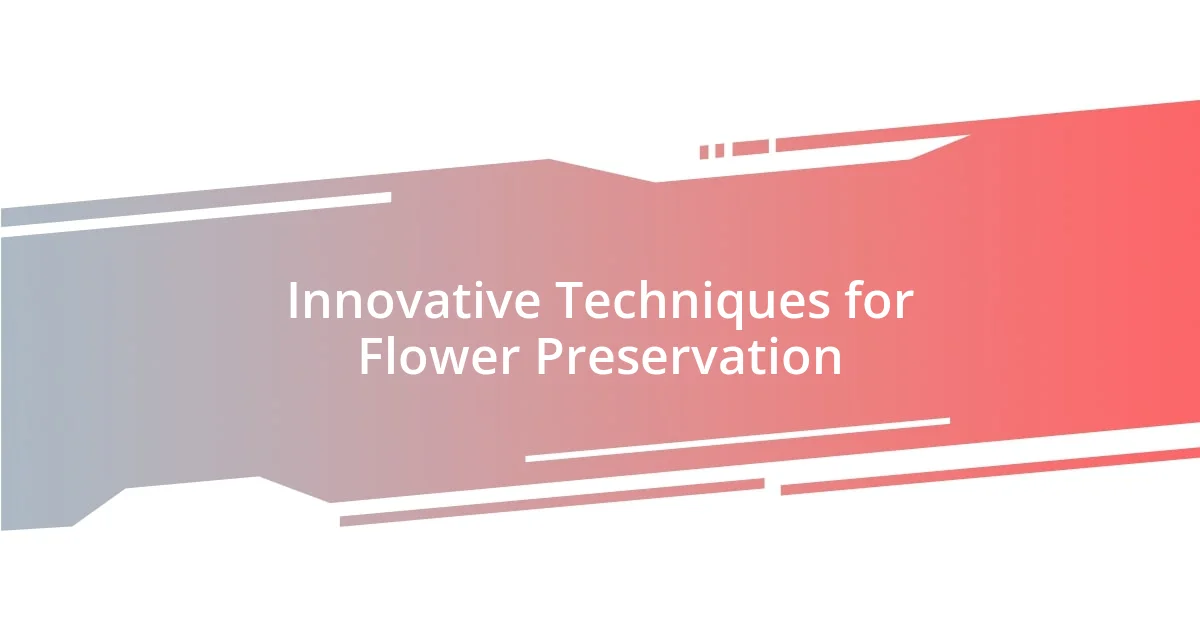
Innovative Techniques for Flower Preservation
One technique I’ve discovered for preserving flowers is using silica gel. I remember the first time I tried this method; I was astonished by how effectively it maintained the flowers’ vibrant colors and intricate textures. You simply bury the blooms in the gel and let them dry for a few days. Isn’t it fascinating how something so simple can yield such stunning results?
Another innovative approach is the use of glycerin. Immersing cut flowers in a glycerin and water solution allows them to maintain their soft texture while taking on a unique, muted hue that can be incredibly appealing. The first time I created an arrangement using glycerin-treated eucalyptus, I was taken by how the leaves transformed, giving the arrangement an ethereal quality. It makes me wonder: how many more floral secrets are out there waiting for us to uncover?
Additionally, I’ve experimented with air-drying techniques, hanging flowers upside down in a dark, dry place. I recall a bunch of lavender I hung in my workshop; not only did it dry beautifully, but the scent filled the entire room, evoking memories of hot summer days. Why settle for temporary beauty when you can create lasting reminders of nature’s exquisite artistry?
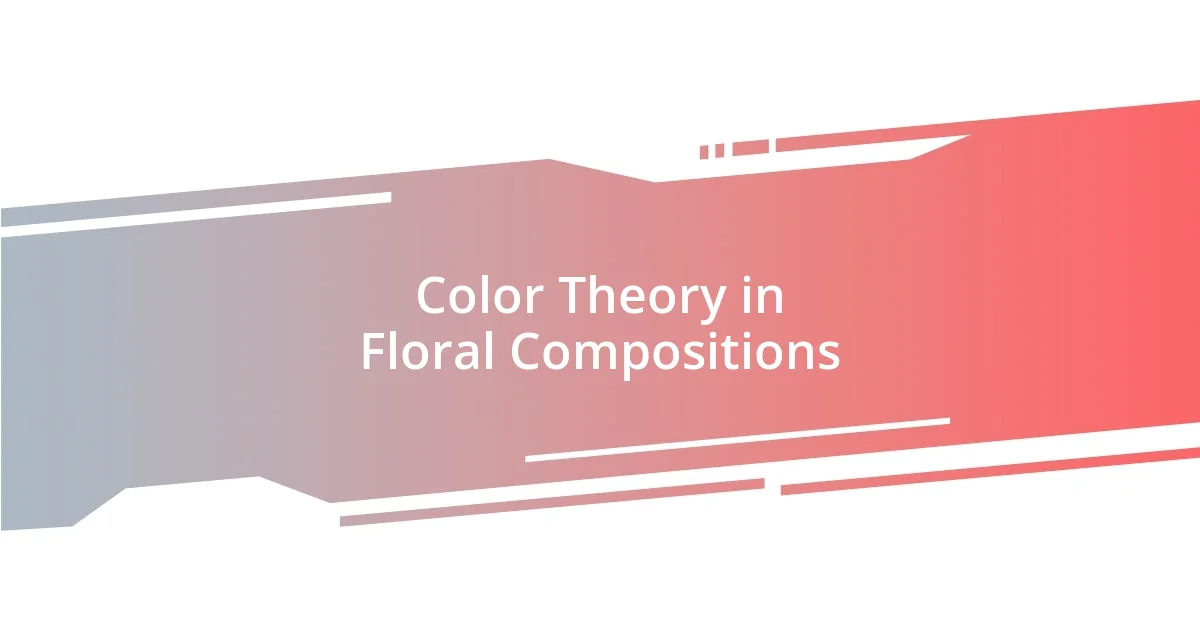
Color Theory in Floral Compositions
Color plays a vital role in floral compositions, often determining the mood and impact of the arrangement. I remember my first attempt at using a complementary color scheme—like the vibrant reds paired with lush greens—it created a striking contrast that truly captivated those who saw it. Have you ever noticed how certain colors evoke specific emotions? That’s the power of color theory at work.
When considering color combinations, I often lean towards analogous colors, which are neighbors on the color wheel. For instance, using shades of blue, blue-violet, and violet in an arrangement not only creates a cohesive look but also instills a sense of tranquility. There was one summer where I focused entirely on creating cool-toned bouquets, and the serene ambiance they conveyed was something I cherished each day I worked on them.
I also appreciate the concept of warm colors in floral design. For instance, incorporating yellows, oranges, and reds can evoke feelings of warmth and happiness. I recall arranging an autumn-themed centerpiece with rich oranges and deep reds, and it instantly brightened the room, making everyone who gathered around it feel more connected. How do you want your arrangements to make other people feel? By thoughtfully selecting colors, you can ensure each bouquet not only brings beauty but also stirs emotions.
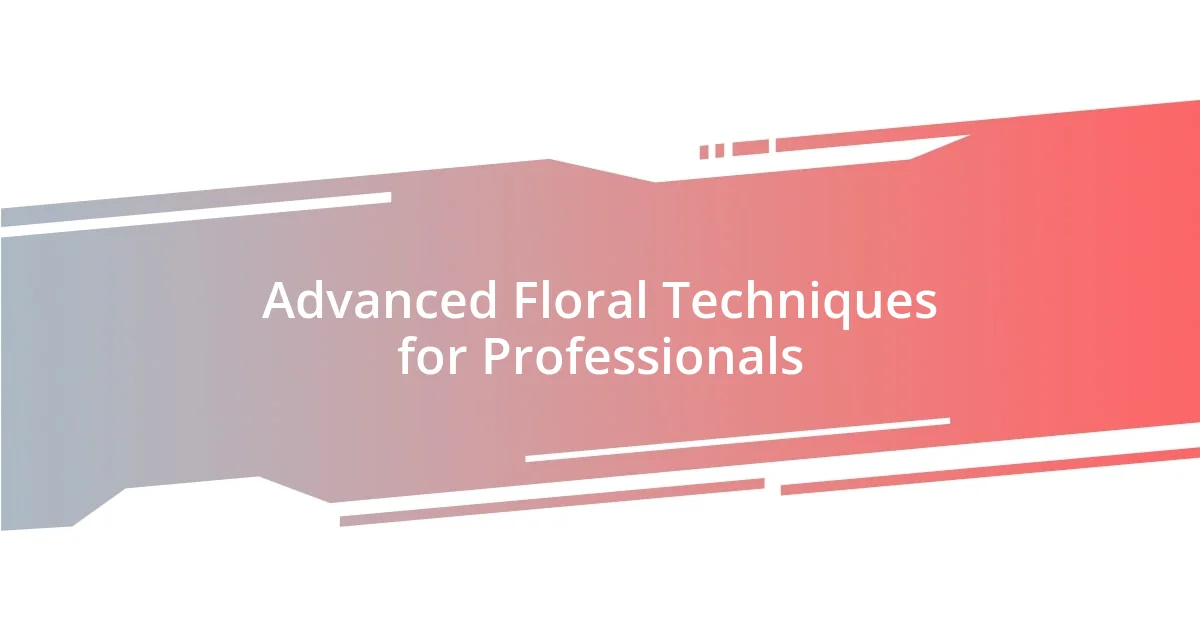
Advanced Floral Techniques for Professionals
When it comes to advanced floral techniques, one of my favorites is using foam-free design. This approach not only minimizes waste but also encourages creativity. I recall a project where I built a stunning installation using only chicken wire and twine to shape the design. The sense of accomplishment I felt as the structure took form was incredible, and it made me appreciate the natural beauty of the flowers even more. Have you ever tried a technique that pushed you out of your comfort zone?
I also cherish the practice of combining dry and fresh materials in my arrangements. It adds depth and a touch of unexpected whimsy. For instance, I once paired dried thistle with fresh roses, creating a visually striking juxtaposition. The experience of creating that arrangement was exhilarating! It made me think about how mixing textures and elements can tell a richer story. What dynamic combinations have you explored in your designs?
Another advanced technique I enjoy is wiring flowers for greater control over their placement. I remember the first time I secured florals with fine wire for a bridal bouquet; it felt as if I was sculpting a living piece of art. This method allowed me to experiment with shape and movement, transforming the bouquet into something extraordinary. Isn’t it amazing how a simple wire can elevate an arrangement from basic to breathtaking?
